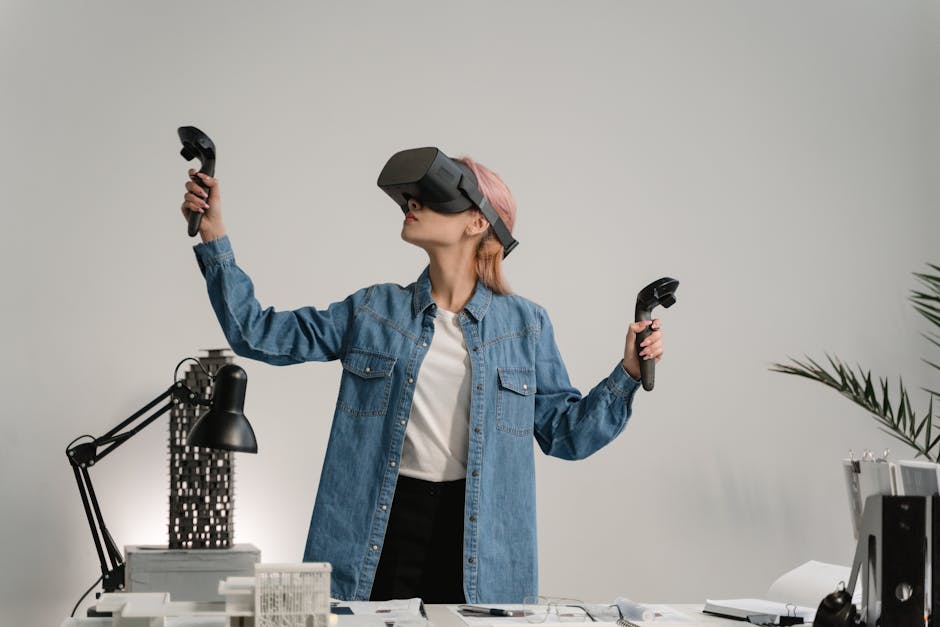The Role of 3D Mapping in Real Estate
Real estate has always been a dynamic and competitive industry, constantly evolving to meet the changing needs and demands of buyers and sellers. With advancements in technology, particularly the rise of 3D mapping, the way we view and interact with properties has been revolutionized. In this comprehensive guide, we will delve into the role of 3D mapping in real estate, exploring its various applications, benefits, and future implications.
Understanding 3D Mapping

Before we dive into how 3D mapping is transforming the real estate industry, let’s first understand what it entails. 3D mapping, also known as three-dimensional mapping or 3D modeling, is the process of creating a digital representation of a physical space or object. This technology utilizes specialized cameras, sensors, and software to capture detailed images and measurements, which are then stitched together to create a realistic and immersive 3D model.
3D mapping allows users to virtually explore and interact with a property as if they were physically present, offering a more engaging and informative experience. By providing an accurate representation of a space, 3D mapping helps buyers, sellers, and real estate professionals make informed decisions and streamline the property viewing process.
The Evolution of 3D Mapping in Real Estate

While 3D mapping technology has been around for several years, its adoption in the real estate sector has gained significant traction in recent times. Traditionally, property listings relied on static images and floor plans to showcase a space, limiting the viewer’s understanding of the property’s layout and features.
With the advent of 3D mapping, real estate listings have become more interactive and engaging, allowing potential buyers to virtually walk through a property, explore each room from different angles, and even take measurements. This level of detail and immersion not only enhances the viewing experience but also saves time for both buyers and sellers by eliminating the need for multiple in-person visits.
Furthermore, 3D mapping technology has enabled real estate professionals to create virtual tours of properties, giving them a competitive edge in a crowded market. By offering virtual tours as part of their marketing strategy, agents can attract more qualified leads, reduce the time a property spends on the market, and ultimately close deals faster.
The Benefits of 3D Mapping in Real Estate

The integration of 3D mapping technology in the real estate industry has brought about a plethora of benefits for all stakeholders involved. Let’s explore some of the key advantages:
Enhanced Visualization
One of the primary benefits of 3D mapping in real estate is its ability to provide a realistic and immersive visualization of a property. By allowing users to virtually explore a space, 3D mapping enables them to get a true sense of the layout, size, and design of the property, enhancing their decision-making process.
Increased Engagement
Virtual tours created through 3D mapping technology are more engaging and interactive than traditional property listings. By providing a dynamic and interactive experience, 3D mapping captures the viewer’s attention and encourages them to spend more time exploring the property, ultimately leading to higher engagement rates.
Time and Cost Savings
For both buyers and sellers, 3D mapping offers significant time and cost savings. Buyers can narrow down their property search by virtually touring multiple properties from the comfort of their own homes, reducing the need for physically visiting each property. On the other hand, sellers can attract more qualified leads and potentially sell their properties faster, saving on holding costs and expenses associated with prolonged listings.
Competitive Advantage
Real estate professionals who leverage 3D mapping technology gain a competitive advantage in the market. By offering virtual tours as part of their marketing strategy, agents can differentiate themselves from competitors, attract more clients, and ultimately increase their sales volume. In a digital age where visual content is king, 3D mapping sets agents apart and positions them as industry leaders.
Global Reach
With 3D mapping, real estate listings can reach a wider audience beyond geographical boundaries. Potential buyers from different locations or even overseas can virtually tour a property, eliminating the need for international travel or physical viewing appointments. This global reach opens up new opportunities for sellers and expands the pool of potential buyers.
The Future of 3D Mapping in Real Estate

As technology continues to advance at a rapid pace, the future of 3D mapping in real estate looks promising. Here are some key trends and developments to watch out for:
Augmented Reality Integration
Augmented reality (AR) is poised to revolutionize the way we experience real estate properties. By overlaying digital information onto the real-world environment, AR technology can enhance the viewing experience and provide valuable insights to buyers. In the context of real estate, AR integration with 3D mapping could allow users to visualize furniture placement, renovation possibilities, and even potential design changes in real-time.
Virtual Staging and Renovation
3D mapping technology is increasingly being used for virtual staging and renovation purposes. Instead of physically staging a property or undertaking costly renovations, real estate professionals can use 3D mapping to digitally transform a space, showcasing its full potential to buyers. Virtual staging and renovation not only save time and money but also allow for greater flexibility and creativity in marketing properties.
Data Analytics and Insights
3D mapping generates a wealth of data and insights that can be leveraged to drive informed decision-making in real estate. By analyzing user behavior during virtual tours, real estate professionals can gain valuable insights into buyer preferences, trends, and interests. This data-driven approach enables agents to tailor their marketing strategies, personalize the viewing experience, and ultimately close more deals.
Personalized Virtual Tours
With advancements in artificial intelligence (AI) and machine learning, personalized virtual tours are becoming a reality. By analyzing user data and preferences, 3D mapping technology can create customized virtual tours that cater to individual needs and interests. Whether it’s highlighting specific features of a property or showcasing relevant amenities in the surrounding area, personalized virtual tours provide a tailored experience for each potential buyer.
Social Media Integration
3D mapping technology is increasingly being integrated with social media platforms to enhance the reach and engagement of real estate listings. By sharing virtual tours on social media, agents can attract a larger audience, generate more leads, and drive traffic to their listings. Social media integration also allows for seamless sharing and collaboration, making it easier for buyers to explore properties and share their favorite listings with friends and family.
Common Misconceptions About 3D Mapping in Real Estate
Despite the numerous benefits of 3D mapping in real estate, there are some common misconceptions that often arise. Let’s debunk a few myths:
3D Mapping is Expensive
While 3D mapping technology may have been cost-prohibitive in the past, advances in hardware and software have made it more accessible and affordable for real estate professionals. Many companies offer affordable 3D mapping solutions that cater to different budgets and needs, allowing agents to leverage this technology without breaking the bank.
3D Mapping is Complex
Some agents may be hesitant to adopt 3D mapping technology due to perceived complexity. However, many 3D mapping platforms are user-friendly and intuitive, requiring minimal training to create virtual tours. With the right tools and support, real estate professionals can easily incorporate 3D mapping into their marketing strategy and reap the benefits it offers.
3D Mapping is Not Necessary
While traditional property listings may still be effective, 3D mapping offers a competitive edge and a more engaging experience for buyers. In a crowded market where visual content is king, 3D mapping can help agents stand out, attract more leads, and ultimately close deals faster. Investing in 3D mapping technology is a strategic move that can yield long-term benefits for real estate professionals.
Conclusion
In conclusion, the role of 3D mapping in real estate cannot be understated. This technology has transformed the way we view and interact with properties, offering a more immersive, engaging, and informative experience for buyers, sellers, and real estate professionals. From enhanced visualization and increased engagement to time and cost savings, the benefits of 3D mapping are clear.
As we look to the future, the integration of 3D mapping with emerging technologies like augmented reality, data analytics, and personalized virtual tours holds tremendous potential for the real estate industry. By staying ahead of the curve and embracing innovation, real estate professionals can leverage 3D mapping to gain a competitive edge, attract more clients, and drive sales.
Whether you’re a buyer looking for your dream home, a seller looking to showcase your property, or a real estate professional seeking to elevate your marketing strategy, 3D mapping is a powerful tool that can help you achieve your goals. Embrace the future of real estate with 3D mapping and unlock new possibilities in the world of property visualization.




